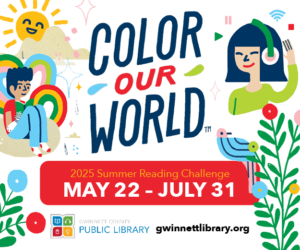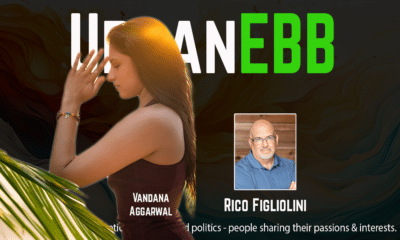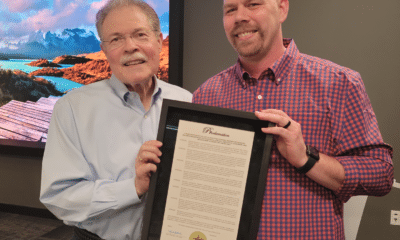Arts & Literature
Mayra Cuevas, Author of YA novel Salty, Bitter, Sweet, talks about writing and diversity in literature [Podcast]
Published
5 years agoon
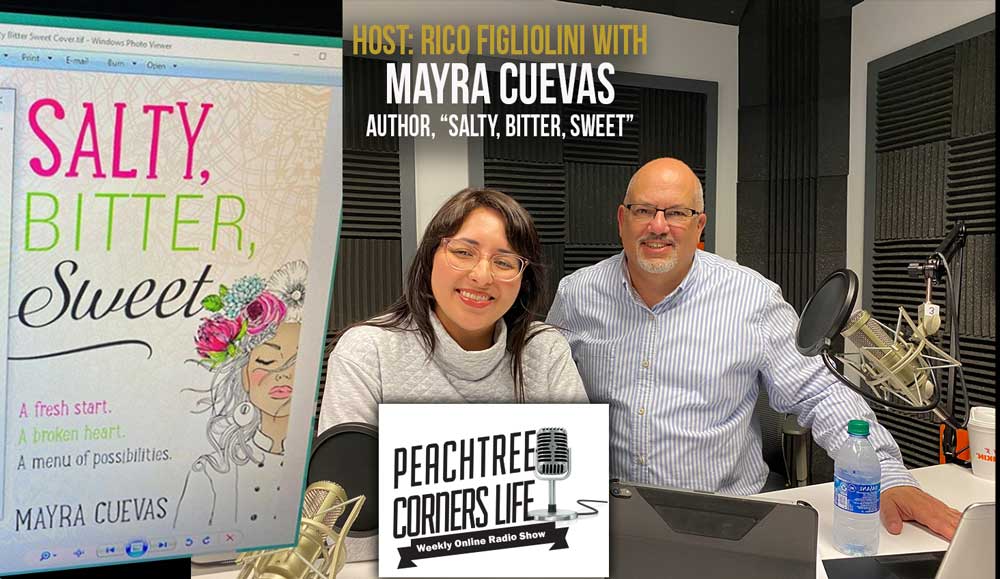
Want to learn what it takes to write a Young Adult novel that showcases diversity, characters that find success on their own terms and written by a person of color? YA novelist Mayra Cuevas debut novel is “Swalty, Bitter, Sweet.” Join host Rico Figliolini and Mayra as they discuss inspirations and writing methods that went into this fantastic book, her Puerto Rican heritage and her own family’s experience with divorce, grief, new beginnings and the healing power of food made with love.
“So one of the themes in the book is about finding success in your own terms. So a lot of times, and I didn’t discover this until later in life. But we try to measure our success through the benchmark of others that others have set for us, right? So others’ ideas of our own success. And then we realized after a long time that that doesn’t make us happy because that’s not really what we want. What we want is something else. It’s our own journey.”
mAYRA cUEVAS
Timestamp – where to find these topics in the podcast
[00:00:30] – Intro
[00:03:05] – Book talks and Publisher Info
[00:03:34] – Title Origin
[00:04:38] – Manuscripts, Rejections, and Success [00:08:28] – Story and Character Inspiration
[00:11:17] – Location and Cooking Influences
[00:14:29] – Mayra’s Writing Process
[00:20:51] – More on Characters and Locations
[00:22:18] – Empowering Young Women
[00:25:10] – Diversity in Young Adult Books
[00:29:05] – About Mayra
[00:33:46] – Cowriting
[00:35:26] – Beta Reading
[00:39:55] – How to finish a book
Podcast Transcript:
Rico: [00:00:30] Hi everyone. This is Rico Figliolini, host of Peachtree Corners Life. This is a Thursday afternoon on a stormy day. We had tornado watches today, but everything’s sort of calmed down this afternoon, and we have a special guest, local author and CNN producer Mayra Cuevas. So she’s, she has a book I want to talk about and I want to talk about her life a bit, but before we get into that, I just want to say thanks to a few people and our lead sponsor. So we’re here at Atlanta Tech Park in the City of Peachtree Corners at the Tech Park, it’s right on the road. That’s Curiosity Labs at Peachtree Corners. It’s a place that houses 70 companies over 15,000 square feet. This podcast studio, of course, and it’s a hub for business and tech and Curiosity Lab itself. The one and a half mile track that we sit on is something that the city itself is putting together, has put together to run and attract companies here to do experiments on a live laboratory, if you will, out there interacting with real traffic, real people where they can research and use their internet of everything. Items, apps, plugins to the autonomous vehicles that run on this track and such. So it’s a tremendous, living lab here that, does a lot of impact for the cities, for us economic impact. Our lead sponsor is Hargray Fiber. They’re a company based out of Hilton Heaven, Savannah, Georgia. They are a company that crafts customized solutions for hundreds of businesses in the Southeast. Whether you’re a small business looking for bundled services or you’re a low on enterprise level business looking for a managed IT services, either voiceover, internet, TV. Well that they can provide a real customized solution for you. They are a local company. They don’t let the cable guy, they will show up and they will really do the right things. And I got to say also with the city of Peachtree Corners, Hargray Fiber, even though it was sitting on what really is a mobility wireless 5G driven track. The backbone of it is still fiber and Hargray Fiber is the company that put the fiber here, and they’re the backbone of what the city’s doing. We’ll be here, so if you want to find out more information, go to HargrayFiber.com now. Now we’re really getting into the, the meat of the meeting, if you will. So there’s a lot of things I want to talk about. I had seen on Norcross high school that you’re going to be doing a discussion there and, in a few days again, so a few weeks.
Mayra: [00:03:05] Yeah, I’m actually doing several visits to local schools. North Gwinnett high, Norcross high school and Duluth as well. And I got book talks lined up, different parts of the country in Tennessee, New York and Arkansas.
Rico: [00:03:22] Wow. And who’s the publisher of the book?
Mayra: [00:03:25] It’s Blank HarperCollins.
Rico: [00:03:28] Blank HarperCollins. Now this is a novel that you put together called…
Mayra: [00:03:32] Salty, Bitter, Sweet.
Rico: [00:03:34] And I’ve been wanting to ask how that name came about. But it what is the story?
Mayra: [00:03:40] It was originally called “Every Girl Should Have a Blow Torch” because food is very much at the center of the book. And my, my lead character Isa, she loves using a blowtorch to kinda, you know, work, work on her desserts and then there’s a really funny incident with the Isa and the love interest in which they set the kitchen on fire using like, wrestling over the blow torch. But the publisher ultimately decides what the title is going to be. And the marketing team came up with this awesome title; “Salty, Bitter, Sweet,” which I love, and everyone loves. And I think it’s very appropriate for the book.
Rico: [00:04:27] It’s all about taste and food and texture and all that. I can imagine the other one’s a little bit more edgy.
Mayra: [00:04:35] Yes, it was more edgy. But the lines stayed in the book.
Rico: [00:04:38] Yeah. I could see him walking around with the little torch. So you can, this is your first book actually, isn’t it?
Mayra: [00:04:44] Yeah, so it’s my first published book. It’s not my first manuscript. I have been working on getting published for about six years now, and I have written other manuscripts. I had an agent that actually picked me up and he’s representing me based on a, on a previous manuscript, but this was the first manuscript that actually went out and sold.
Rico: [00:05:03] So you got that agent because of the original manuscript and then he saw the others?
Mayra: [00:05:08] Yes. So I mean, this is one of the things that a lot of, it’s not really talked about that much in the publishing process. So many times I knew the debut authors, you read their stuff and it’s like, Oh, this is actually really good for a debut author. Well, that’s probably not their first manuscript. It’s just the first manuscript that sold and that found a home at one of the big publishers. In my case, I really want it to be published in one of the big five. HarperCollins is part of that group. So I was, I was very proud and really happy to make that happen.
Rico: [00:05:42] Would you say this was your third, fourth, or fifth manuscript?
Mayra: [00:05:45] This was my third manuscript. Yes, it was my third manuscript. The first one was a fantasy novel that will never see the light of day because it was just absolutely awful. But at the time, I thought it was the most amazing thing written since Harry Potter, and it got about 200 rejections, but I kept going. And then I did, I, it was, it was my first manuscript and it taught me a lot about the writing process and about the publishing industry as well. And then I wrote a second manuscript that was a camp story, and that was the one that my agent decided to represent me. And then Salty, Bitter, Sweet.
Rico: [00:06:31] So when you did the 200 rejections on the first, you said let me set that aside and write a different one.
Mayra: [00:06:37] You have to move on at some point. And I think 200 rejections is a good place to move on.
Rico: [00:06:43] Who knows, it might get picked up later. But so your second book, you finished. And then you went on anyway to write your third manuscript.
Mayra: [00:06:52] Yes. So for me, you know, you kind of set goals for yourself as a writer, right? And for me, my goal is to put out one manuscript a year. Like I usually, and I have been pretty consistent with this. Like right now I have another manuscript that will potentially go out on submission to publishers in the next couple of months. It’s getting polished.
Rico: [00:07:14] Is this the fourth one?
Mayra: [00:07:15] No, it’s actually the fifth, the fifth manuscript that I’ve written. Yeah. I have the fourth I’m still working on this and it needs some more polishing. It’s also why I love writing for teens and young adults, especially for, for teen girls. Because I, it’s a very important time in their lives. It’s a time where they’re trying to figure out what their view, they’re forming the view of their world, right? And it’s a time of insecurity. It’s a time of lots of changes and just, just difficult things going on in your life. And it’s wonderful to have a voice of empowerment in the background of you know me, like I’m almost 40. I’ve been through that stage in my life. I’ve kinda, I’ve lived through it, you know, I’m on the other side of it and I, I have some perspective now I can look back and say, you know what? These things that you’re struggling with in the grand scheme of things are not that big of a deal. You know, it’s going to be fine.
Rico: [00:08:26] But you don’t say that in the novel necessarily, or have the adults in the novel say that.
Mayra: [00:08:28] No, because it’s like you gotta the beauty about writing for young adults is having these amazing characters who are discovering these things for themselves. You know, just, they’re going on this life journey. You know, like my character Isa, she’s dealing with her grandmother, who is her culinary muse, has just passed away. And not only that, but she’s also, her grandmother is Cuban, so she identifies, she sees herself in her grandmother, her Latina side, right? Her parents have just gotten a divorce and his dad is living with another person. And this is something I went through at that age. My parents went through a very difficult divorce. You know, I relied a lot on my grandparents to, you know, to nourish myself emotionally and, and, and mentally. And I’m, I’m writing from that point of view.
Rico: [00:09:31] And I was going to be one of my questions as well. The, you know, how do you, do you come to this with some of the experiences, obviously with the divorce in your family and stuff, but also, I mean, you’re bringing it from, the, you know, from the experience that you, that you have from being a Puerto Rican, maybe Latino. So, and being a woman and writing from a woman’s point of view, obviously. But you are also like a mom to two step sons.
Mayra: [00:10:04] Yes, two amazing stepsons. You know, they inspired, both of them, they want to know which one is the one that’s in the book.The guys have asked me and said, is it me? Is it me? And I’m like, well, it’s a combination of the both of you and it’s true. You know, I used them to kind of model the romantic interest in the book because you know, they’re right there, so it’s just so easy.
Rico: [00:10:32] Yeah, that is so funny. Are they okay with that?
Mayra: [00:10:33] They’re fine. They’re very supportive of me. They’re actually coming for the book event on February 29th.
Rico: [00:10:41] That’s so funny. I mean, some of the kids might, depending on who’s there, they might be, are you him?
Mayra: [00:10:47] Diego. Diego is a romantic interest. Yeah.
Rico: [00:10:51] And you know, I mean, as I was reading through the school library journal review, because the book’s not out yet. The book is going to be out on…
Mayra: [00:10:59] Yes, it’s out on March 3rd. But, everyone can preorder and preorders are awesome. Barnes and Noble, Amazon, even we have Little Shop of Stories or Curious Books here in town. They’re also, yes. Anywhere where they sell books.
Rico: [00:11:17] So you placed this, this is actually placed in Europe.
Mayra: [00:11:21] So the story takes place and is, there’s multiple locations in the book. The bulk of the story takes place in Leon France. And there’s a reason for that. It’s that Leon friends is actually the gastronomic capital of the world. And here you have a girl who wants to be a chef more than anything. She believes her happiness and the way that she gives herself to others is in food. And to place her at the epicenter of, you know, food and the entire world. It was just a way to raise the stakes just a little bit more, you know,
Rico: [00:11:57] Not only that, but she goes to school of this top cook. And the reward is to get your own restaurant, essentially.
Mayra: [00:12:03] You get to apprentice, so you get to learn from one of the, the, at the end of the program that she’s in, that she’s competing for a spot at a kitchen of a three Michelin star chef, and he’s not only a three Michelin star chef, he’s a legend in, in the high cuisine.
Rico: [00:12:25] You have to be. That’s funny. So, but research. I mean…
Mayra: [00:12:30] Did a lot of research. Yes.
Rico: [00:12:32] Are you a good cook too?
Mayra: [00:12:33] I love to cook. And you know, that’s one of the reasons why I chose to do a foodie book, you know, is because I love food, in my family and a lot of Latino households, food is a way to connect. It’s a way to bring us together. And your, your background’s Italian, so you know, same thing.
Rico: [00:12:57] Yes. Three hours dinners and all that.
Mayra: [00:12:58] But it is a time when we come together and it’s a time of nourishing. It’s a time of love. And it’s also, food is a vehicle for memories. You know? And like a lot of, you know, the memories that I have growing up of my grandparents are associated with specific dishes, you know? It’s like, I mean, I still remember the sense, the taste, you know. The you know, the crackling of fried chicken, you know. And, and also moments, specific moments in time that. Are associated with a certain type of meal, you know. So for Isa, for the main character, like she’s connecting with her grandmother, even though her grandmother had passed, has passed away through the meals she’s preparing. And all of these memories are coming together through food and the love that she wants to give to her family and the world. She wants to give of herself to the world through food.
Rico: [00:13:59] That’s when there reminds me of my wife and my mother in a way, because I would remember when she, on Saturday morning, Sunday morning, she would do the sauce and the first thing that went in all the time was the chopped onion and the sizzling. And you’d hear that and smell it and those, those scents would come back to you later.
Mayra: [00:14:18] Yes.
Rico: [00:14:19] And of course…
Mayra: [00:14:20] They’re heartfelt, you’re, you’re, you have a physical reaction to the smells, the sounds, the tastes.
Rico: [00:14:29] And on the cook side, cause my wife likes to cook too. She’d be like, if she spent an hour, two hours cooking, putting together the meal, she actually wouldn’t eat after that because she’s done. She’s put everything into that meal and that’s it. You guys have dinner. I’m good. So yeah. So it’s a different way of seeing that. So, you know, I love YA novels too. My kids, I have three kids. They grew up on Harry Potter, they grew up all the YA novels you can think of. They read through and of course, you know, Fault in Our Stars, I mean, a whole bunch of them. And we would sometimes share our recommendations back and forth. And I’m sure that your book would probably be key to my daughter. She’d probably love that I bet. So the writing part, let’s get back to the writing process because that always interests me. How do you, because everyone’s different. Every writer says the different, they some need to do three pages
a day, some need to do four hours, then it doesn’t matter if they produce nothing. Some people need a quiet, they need to shut the door. They won’t open that door until they’re done with the manuscript and won’t show it to anyone. So tell me your process.
Mayra: [00:15:35] So, I tend to be very practical with my writing because I don’t have a lot of time. I have a full time job and I also have other responsibilities. I sit on the board of a Kadampa Meditation Center, Georgia in Inman park. and sometimes I teach meditation as well. So I’m, I have a very busy life. So when I do sit to write, it’s got to be a quality writing. So when I have, when I have an idea for a new project, I’ll come up with an idea. I have a series of questions that I’ll ask myself to develop that idea and see if that idea is viable. If, if the idea we’ll, it can stretch into a whole book, because writing a novel is not just an artistic thing a creative thing. It’s also a very technical thing. A novel has to have certain parts. It has to hit certain points. Your character needs to go through a journey that is very defined. So for me, when I start, I like to see all that plotted out at first, I’m on what they call a plotter, not a pantser. So pantsers kind of just start writing and then whatever comes, comes. I, my approach is a little bit different. So I, I try to plot out the whole book at first and I use that as a guide. Things ultimately change from, cause, you know, the characters kind of start telling you where they want to go. They’re alive, much alive and hanging out inside my head. And then your new characters develop, you know, Lala, the grandmother in Salty, Bitter, Sweet. She didn’t develop until like, the third draft of the book. She wasn’t in the original story.
Rico: [00:17:20] She seems to be like the holding there.
Mayra: [00:17:22] Because when she came to me, she came fully formed. But you know, she wasn’t there originally. And that happens a lot. There’s, there’s a lot of characters. Sometimes you, you know, one of the manuscripts that I’m working on right now, I am struggling with one of the characters and I can’t get them together, but others just come fully formed. They just show up and then you write them and they’re perfect from day one, you know?
Rico: [00:17:48] So yeah, you’re a plotter, but do you actually create an outline like chapter by chapter along?
Mayra: [00:17:53] Yes, and there’s a couple of reasons why I do that. One, is because at the point where I’m at right now, I need to discuss it with my agent. And then the second one is, you usually, once you sell the book, there’s potential to sell other books on spec and by contract that requires plotting chapter by chapter, then they need to know what your, what they’re buying. Pretty much.
Rico: [00:18:17] Okay. Unless you’re doing a trilogy and even with that you probably have to do that, I bet.
Mayra: [00:18:21] Even with whatever, whatever you sell that the publishers just then just want to know what they’re buying.
Rico: [00:18:28] So I saw an outline that James Patterson did. His is one paragraph per chapter. Is yours similar?
Mayra: [00:18:35] Yeah, mine are a little. That’s a chapter by chapter outline is very good. That’s pretty much a, you just give us a short synopsis of what’s in every chapter,
Rico: [00:18:45] and that’s what you write. So you’re writing, you’re sitting down that day and you’re going to write that chapter.
Mayra: [00:18:50] Yes. But again, it is. It’s an idea, right? These, these, these are just ideas. But when you’re writing, that’s where the creative side comes in. And things just start changing. Sometimes they move in completely different directions that you didn’t expect, and your characters just want to do what they want to do. And you’re, you know, and so you’re taking that outline, but you’re being flexible around it. You know, you’re not…
Rico: [00:19:20] You’re not held to it.
Mayra: [00:19:21] No, you gotta. Exactly. You can get, it’s very organic. It’s a very organic process. I just, I just like to give it a little push in a certain direction.
Rico: [00:19:31] Did you ever have to go back a few chapters and say, okay, my character took me here, but I need to adjust the foreshadowing. I need to do a few things back here.
Mayra: [00:19:40] So normally I write forward and then what that means is that I will write all the way to the end of the book because I want to know where the characters are taking me and then how the book is going to end, and then I will go back and make changes. I usually…
Rico: [00:19:55] So your first draft is all the way through.
Mayra: [00:19:57] Yes. My first draft is always all the way through. Because what I found out is like if you kind of stop and go, stop and go, you will edit yourself until oblivion. And then you just, you know, you just keep going back and there’s no point because until you get to the end of the story, you just don’t know how the story’s going to end. You know?
Rico: [00:20:17] Do you ever write like character profiles? You do write those down?
Mayra: [00:20:21] Yes. I’ve done that several times because, especially in young adult, the genre is very character-driven. And what that means is like, you want very dynamic characters that pop off the page. They’re very memorable, that, that have something to say, you know. So, so it’s nice to develop that, with a character sketch to help you kind of pull out some of those very tangible things that they later you’re going to develop throughout the story.
Rico: [00:20:51] I have to ask you, so when the characters take over and they start writing, do they ever like break that, that profile? No, you would never do this?
Mayra: [00:20:59] All the time. You know, once you go. So let me go back to the example of Isa because this book, it’s changed.
Rico: [00:21:08] She sounds like a great character.
Mayra: [00:21:09] She is, but she started out, Isa started out as this complete French girl who was leaving New York. I mean, and she has changed. She just, when I started writing her, the idea that I had of her is completely different with what she ended up being. Because, they characters are like real people, you know, and they should be like real people. They’re complex individuals. They have their history to them. They speak in their own voice. You know, they’re, yeah. They’re true to life.
Rico: [00:21:45] The best characters. Leon France, have you been there?
Mayra: [00:21:49] I’ve been to several areas in France. Have not been to Leon. It’s on my list of places that I want to go, but I did a lot of research to get it right. And I did have a French consultant look at the book. Yeah, I actually had a consultant for the French aspects of the novel and also for the culinary aspects of the novel. Chef Carla from Buck and Alia. She’s an executive pastry chef, and she served as a consultant in the book.
Rico: [00:22:18] Now, obviously the main character is a girl, and we talked about, you know, empowering girls is one of the things you want to be able to do. So tell me a little bit about that. What was the, you know, was that important? I mean, I have a daughter too, I can understand why, but like to hear your words on it.
Mayra: [00:22:35] So one, one of the themes in the book is about finding success in your own terms. So a lot of times, and I didn’t discover this until later in life. But we try to measure our success through the benchmark of others that others have set for us, right? So others ideas of our own success. And then we realized after a long time that that doesn’t make us happy because that’s not really what we want. What we want is something else. It’s our own journey, right? So Isa needs to go, she thinks that what she wants is to be in this very stressful environment with a male dominated kitchen that the entire world says, you have reached the peak of your career at where you’re at in life, right? This is, it’s heartache, cuisine, you’re going to be training under you know, this culinary legend. And when she gets there, she realized this, this, this is not making me happy. I don’t, you know, I feel miserable here. Like it’s stressful as all hell, you know? It’s not what she thought she was, but then the struggle becomes, okay, but I’ve gotten here. Do I want to stay and kind of just suck it up? But you know, and that’s, that’s us adults. We do that many of the times, you know, we do that at work. We do that in relationships, and we do that in many stages of, of many different places of our lives. So the decision comes
whether, you know, she wants to, she’s already sacrificed so many aspects of her life to get here, but now that she’s gotten here, she realizes that she’s not happy. So what does she do?
Rico: [00:24:25] What does she do? Well she has other complications, obviously. Her grandmother passed away, divorce.
Mayra: [00:24:30] Isa has put everything on the line, everything, everything. Everything that she is to get to this place.
Rico: [00:24:36] And a boy comes into her life also?
Mayra: [00:24:38] To mess things up, to screw up her plans. So the world is conspiring against her, right? So, but yeah, I want to empower girls to think about their goals as, as something that they can achieve on their own terms that they, they can set the bar, they can decide what they want. What does that mean for them versus relying on other people to set the bar for success.
Rico: [00:25:10] Which makes sense. I think that’s what we all want to be able to be happy with our own things, boy or girl. We’ve talked about a little bit also, diversity in Young Adult books. So do you want to speak to that as well?
Mayra: [00:25:22] So the topic of diversity is very important for me. I was born and raised in Puerto Rico. I’m a Latino woman. I love romantic comedies, love, love romantic comedies. And, but what I struggle with is seeing myself in a romantic comedy. You know, other than movies with, like Jennifer Lopez being the star. It’s rare to find a romantic comedy, you know, film or in books with a Latina main character. So I wanted to give girls, especially Latina girls, an opportunity to see themselves as the lead in their own story, right? They’re the lead in their own life and have a vision for that they can be the main character. Another thing that’s always playing in the background in my mind as I’m writing, is that only 5% of all kids books published present a Latina, Latin character. Of those 5%, only 34% are written by Latin writers or illustrators. Meanwhile, in schools, 22% of the kids are Latin in classrooms, in public schools in the US so just the numbers just don’t add up there. There needs to be more books represented, marginalized communities, written by people of color.
Rico: [00:26:53] So is that promoting, like I always look at things like that as I’m, being Italian, Italian heritage and coming from New York and Brooklyn and coming South and, you know, tell people my name is Rico moved down here in 95. People are like Rico Lopez? Rico Petrocelli? It’s like, no, just Rico’s fine. People are funny that way about diversity, when they don’t see it. But also, you know, I think we have to, maybe we have to, like you are doing encourage a talent to be able to write those books because it really, there’s just a lack of talent out there, right? To some degree.
Mayra: [00:27:38] The publishing industry is 80% white. So, and that is something that has come to the forefront now with this whole debacle with American Dirt, with the novel American
Dirt. So it’s, you know, if we want to promote more books written by marginalized communities, by people of color, we have to publish more of these books, right? That we need to give everybody a seat at the table. And not only a seat at the table, but given the same opportunities that white authors are given in terms of publicity or promotion or promoting the books and all that stuff. Atlanta, thankfully Atlanta has an incredible young adult, very diverse young adult community, you know. We have, so I mean, we have, Aisha Saaed who writes from a Muslim perspective. We have Nick Stone who writes from the African American perspective. We have Beckel Bertolli who writes from the Jewish perspective. It’s incredibly diverse. Just, you know, here alone in Atlanta, but we need to do a better job at lifting these voices.
Rico: [00:28:51] Are there any big, every time I think of publishers they’re in New York for some reason. Are there any Atlanta big publishers?
Mayra: [00:28:57] So the big five publishers who control most of the market are in New York.
Rico: [00:29:05] I mean you would think that we would have something big here but that’s not the case. So this has been a journey for you too, I mean, you come from Puerto Rico. When did you, when did you move here?
Mayra: [00:29:15] So I moved to Miami when I was 22 I got a scholarship. I know Florida international university to do a master’s in investigative reporting. And after I completed my masters, I moved here to Atlanta. I got a job, doing investigative reporting for WSB TV, the NBC affiliate here in Atlanta. And then after a year doing that, I moved to Sienna and so I’ve been in Sienna for more than 15 years now.
Rico: [00:29:40] 15 years wow. Yeah. That’s cool. I mean, CNN is going through its things though. I have a friend that works in, I think he’s been through three waves of downsizing or something like that.
Mayra: [00:29:50] It’s a great place to work. My colleagues are amazing.
Rico: [00:29:56] So journalism is still something you want to do, even if you become successful writing? Continued success?
Mayra: [00:30:02] If that happens, we’ll have to revisit the conversation.
Rico: [00:30:08] Yes, writing. Anyone that wants to be a writer, though, that’d be a great living. You know?
Mayra: [00:30:15] It’s not. Yeah well, I mean, the reality is the, the writers that hit it big and get, you know, seven figure contracts they’re rare. Most, most of the writers that I know have jobs. Are or they do other, other things to kind of compliment their income. Yeah, don’t quit your day job.
Rico: [00:30:44] No you don’t want to do that. But at least you’d, some of them actually do. So I know a couple of two sisters that they do a lot of editing and ghostwriting, so at least they’re still working their craft to some degree. Journalism is the same. So when you’re producing, are you, do you get something?
Mayra: [00:31:04] I do. So last year I traveled about 30% of the year. And well I got gas covering a protest in Puerto Rico. That was exciting. In my own, in like my own backyard. I went to like get gas, buy like these gas canisters out there, run all over. But no, it wasn’t. Most of the work that I’m doing now, there was a time that I did a lot of breaking news, but most of the time that I do now, is features highlighting amazing things that, that people are doing around the US.
Rico: [00:31:38] Do you ever get to speak to any authors? Other authors?
Mayra: [00:31:41] Well, you know, I am surrounded in Atlanta. I am surrounded by a group of amazing authors and a community of my amazing authors. Thankfully my writing partner, Mary Marquardt and I formed this group called Mingle and Margarita’s and we meet, yeah, we meet up. It’s a writing community and we meet twice a year to come together and talk about different things that authors and writers are interested about. And also, I belong to a group called Las Musas. It’s a Latin, Latina authors collective. And there’s about, right now, there’s between 40 and 50 of us, and these are all authors whose books are coming out in the next couple of years, and, you know, we connect with each other. We pitch panels at conferences, you know, and support each other.
Rico: [00:32:35] Do you, do you foresee Salty, Bitter and Sweet becoming maybe a movie or?
Mayra: [00:32:43] I hope so. Fingers crossed if there’s anybody from Netflix listening to this. Like, just give me a call.
Rico: [00:32:57] This would actually be a great Netflix movie, I could see that. And you’re also doing international women’s day panel books and all that.
Mayra: [00:33:00] I’m super excited about that event. It’s gonna, it’s gonna be so much fun and a great conversation. It’s on Sunday, March 8th at 3:00 PM at the Norcross community center. And it’s going to be moderated by a CNN anchor, Christy Paul. She’s also an amazing women’s advocate. And then, Marie Marquardt, who I just, I just co-wrote a manuscript with her. It’s about to go on submission. Yes, it’s a nice little feminist, we call it the feminist unicorn. Yeah, so we’re going to be on the panel talking about stories that empower girls and women.
Rico: [00:33:46] Do you like the co-writing? Is that different? How do you do that?
Mayra: [00:33:49] So that was so much fun. So, Maria and I have been working together for about six years. We started off as critique partners. So, you know, we were talking about my
writing process. Maria and I exchange chapters of the stuff we’ve written and she critiques my chapters and I critiqued hers. So we’d been doing this for a while. And then finally we’ve been talking about, writing a book, a book together, but it kind of worked on timing. She was on a contract. I was like working on my stuff, and finally we found this opening where she wasn’t on a contract and I had just sold my book and we could work on something together. So, yeah, we basically, I’m writing the Latina, one character from the Latina characters perspective. One chapter, and then she’s writing another chapter from the white girl’s perspective.
Rico: [00:34:43] So you are splitting that up chapter by chapter?
Mayra: [00:34:45] Yes. We split up the book chapter by chapter. Yes. You would think it was less work, but it’s not.
Rico: [00:34:55] No you’re picking it up. It’s almost like a writing prompt in a way. You’re picking up the last chapter. And what if your character takes it a different way?
Mayra: [00:35:02] Well, that’s, that’s where plotting comes in. We plot it. We actually sat down and plotted the whole book.
Rico: [00:35:08] All of sudden said, sorry, at the end of my chapter, this is where she’s at.
Mayra: [00:35:11] Because it’s interesting because even with this process, we had characters come out. Like, they just showed up. But you know, we just have to go with it. Cause it’s like this character just showed up. Cause we, you know, you don’t understand. That’s how the process works, right.
Rico: [00:35:26] People, I’m sure people listen to this and like they just pop up in your mind? Like, you know how does that work? Yeah. But, so she was like a beta reader for you. Do, do you do beta reading?
Mayra: [00:35:37] Yes, I do. I actually have a lot of beta readers.
Rico: [00:35:40] So beta readers are people that would read your book before it’s published like the manuscript.
Mayra: [00:35:43] Yes, give you insights and then they kind of let you know what’s working, what’s not working, what you need to fix. On top of beta readers, before Salty Bitter, Sweet came out, we also had, the publisher hired a sensitivity reader. So somebody to come in and say, hey, this can be seen as problematic. You need to work on this, fix that, that kind of thing.
Rico: [00:36:07] So beta readers your family, friends?
Mayra: [00:36:10] No, I try not to use my family or friends as beta readers because they sometimes then not to be very objective, you know, this is great and I don’t want to, yeah, I, you know, I want to hear, I want to know what doesn’t work. Like I need to fix what doesn’t work. So I usually use other authors and writers. Yeah.
Rico: [00:36:32] That’s funny. I was reading something about, the, the author that wrote the Martian and his beta readers were all online and I think it was for two years or a year. They were just feeding him stuff and they were all like techie geek guys that were collecting all this martian stuff. And he was like, if it wasn’t for that.
Mayra: [00:36:50] And you have to be open as a, as a writer, you have to be open to criticism because that’s how you get better and that’s how you improve.
Rico: [00:36:57] So that didn’t hurt if you heard?
Mayra: [00:36:57] No. The 200 rejections hurt. That hurt.
Rico: [00:37:02] I still can’t believe it was 200 times.
Mayra: [00:37:02] Yeah, my husband will attest. There were a couple of instances that I just, I just started crying and he’s like, you cannot cry every time you get a rejection.
Rico: [00:37:14] Now did you send them out one at a time. Did you bulk send any of them out?
Mayra: [00:37:16] Yeah, I did. I bulk sent them and I kept a spreadsheet with, you know, yeah with every single one.
Rico: [00:37:25] Did they include people that didn’t respond or people or they all responded, but rejected?
Mayra: [00:37:29] No. So what happens when you’re, when you’re trying to find an agent is a lot. There’s a couple of ways to go. So sometimes you can meet people at a conference and you can pitch your work in a conference and they’ll tell you if they want to read more or not. And other times you just, you do what’s called a cold query. So the agent says, Hey, I’m open for queries and this is what I’m looking for. And then you, if your manuscript fits that description, then you send them an email saying, Hey, this, I got this. Like, are you interested? And sometimes they just respond with a form letter or sometimes they request your stuff if they think it’s good and they liked it. And other times you never hear back.
Rico: [00:38:08] Did you ever get a rejection letter where they actually gave you some advice that was meaningful? Probably not.
Mayra: [00:38:15] Well, let me see. It was interesting when they actually requested to see the manuscript because it felt that I was close. That was like, okay, so they are interested in the story and, and they want to see what I have to say. So that was very encouraging. And I ultimately, I knew that whoever was gonna end up being my agent and she was just going to like it from day one and she was going to be excited about the book. I mean, from day one. And that’s exactly how it happened.
Rico: [00:38:48] Did that change a little bit through the editing process? I mean, did it have any major changes or?
Mayra: [00:38:55] Yes. I mean, it got, all books change. Like it’s like, When you, when you are writing to be published, and if you’re, if you’re serious about the craft of writing, you have to be open to edits. Because, books that, for example, the book that I’m working on right now, we are on our fourth round of edits. This is after the polished draft. So it’s gone to our agents back and forth, three, three or four times. and every time the book becomes stronger, and then now when the book goes to publisher and it gets acquired by a publisher, there’s going to be, again, numerous, numerous rounds of edits. So by the time Salty, Bitter, Sweet was ready to go to press, I think it had been edited probably between 30 and 40 times. Yeah. I didn’t like read through it, made changes that, that, that many times.
Rico: [00:39:55] Yeah. So what would you say to a young person that might be, that wants to write, they’re in high school, you’re going to be at Norcross High school at some point. What would you say to them if they said, you know, I write these profiles all the time. I haven’t really sat down to write. What would you say to them that they should do to get it done, to get the first book done regardless, good or bad, but just to finish it. Cause the right processes really it’s not a book until you finish it.
Mayra: [00:40:22] Yeah. Keep writing. You know, writing is one of those things that you learn by doing it. You know, you’re not, you’re not going to learn writing by sitting in a classroom. You know, you, you learn writing by actually sitting down, writing, getting your work critiqued and going back and editing. And then when you have gotten to that point with that particular manuscript that you just, I cannot do anything else with this. Then you move on and you write something else and you bring everything that you learned from that first manuscript into the second one and so on and so forth.
Rico: [00:40:55] It’s not surprising. It’s amazing to me. I mean, Stephen King, even, I think he wrote it by four or five manuscripts before Carrie got published. And, and then I think the Stand was one of those. But, yeah, these writers, it’s, I envy you guys. I’d love to do that, but, you know, it’s just like, it’s a struggle. I mean, to get it done.
Mayra: [00:41:18] I mean it is and it’s not. I love writing. I cannot imagine my life. Without writing. I mean, it just gives me such a sense of joy and a sense of purpose. And I love telling stories for me, something very meaningful. And the way, we, we grow as, as humans and as civilizations is
with our stories, by the stories that we pass on to one another. So story is incredibly important, in communities and humanity as a whole. Also, fiction specifically has so many benefits. it just, the main one. It just makes you happy, you know, it just, it makes you happy to read good fiction.
Rico: [00:42:04] Yeah. Makes you laugh, maybe sometimes, maybe even cry.
Mayra: [00:42:07] Yes, it does. And it gives you empathy. It builds, you know, studies have shown that it builds empathy with one another. And with our communities are so polarized right now that I think that is so important that we learn to see the world from somebody else’s point of view that, you know, we may not always have access to.
Rico: [00:42:28] Different perspectives.
Mayra: [00:42:29] Yes.
Rico: [00:42:30] Diversity also brings sometimes clarity to problems. Yes. That’s good. We’ve been speaking to Mayra Cuevas, who’s written her first published book, but not the first book in her repertoire and Salty, Bitter, Sweet. It’s going to be coming out in March.
Mayra: [00:42:46] It’s coming out March 3rd, we have a pre-release event of everybody’s welcome, invited to come. It’s going to be at the Decatur library, amphitheater. Friday, sorry, on Saturday, February 29th at 5:00 PM.
Rico: [00:43:02] And they can find more information about you or follow you on what or where?
Mayra: [00:43:06] Follow, well, the best place to go is my website. It’s MayraCuevas.com.
Rico: [00:43:11] All right, cool. Thank you. I appreciate you. Thank you so much.
Mayra: [00:43:15] It’s been great to be here. Thank you.
Rico: [00:43:17] Bye guys.
Related
Arts & Literature
Experience Shakespeare in the Park with Contemporary Classics’ Twelfth Night
Published
1 month agoon
April 11, 2025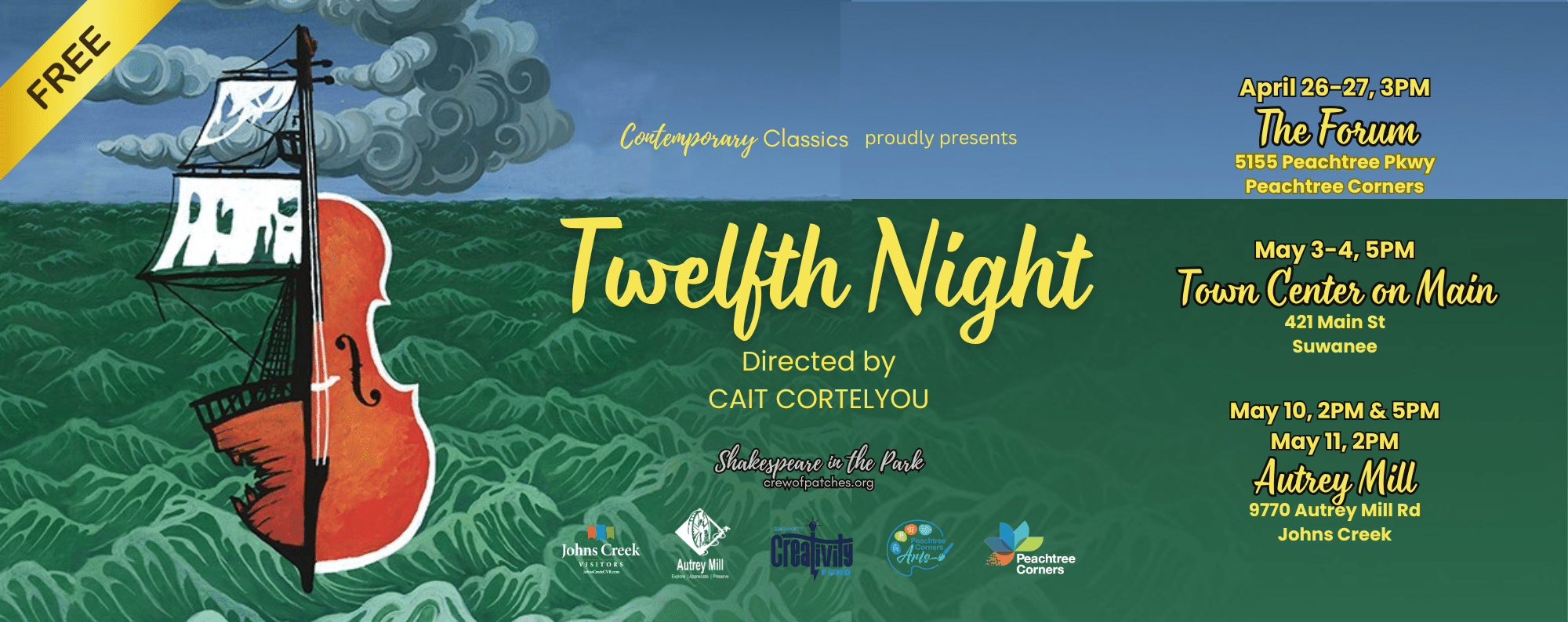
Contemporary Classics Theatre will present Twelfth Night, a free “Shakespeare in the Park” experience at three beautiful outdoor venues in north metro Atlanta
Twelfth Night, William Shakespeare’s romantic comedy of mistaken identity, will play at three beautiful outdoor venues in north metro Atlanta from April 26 to May 11.
Directed by Cait Cortelyou, known for her award-winning feature film “Ask for Jane,” Twelfth Night is a rollicking ensemble comedy explores unrequited love, misperceptions and the instability of gender.
Set in the coastal town of Illyria, young Viola survives a shipwreck and finds herself alone, believing that her twin brother died at sea. Disguising herself as a man, she finds work with the Duke Orsino, quickly falling in love with him. Orsino, however, is in love with the Countess Olivia… and Olivia quickly falls for Viola.
Meanwhile, Olivia’s steward Malvolia has bullied the household for the last time — and the staff is out for vengeance.
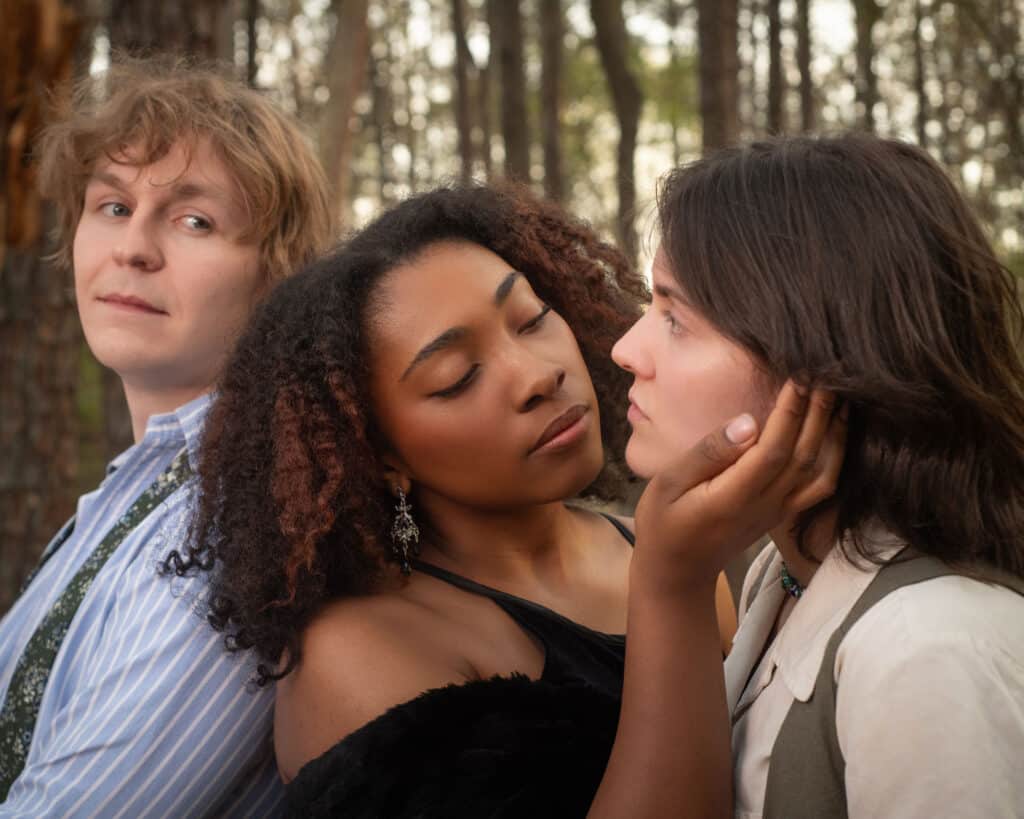
This timeless production of Twelfth Night features Allen Cox, Carl Fisk, Ryan Hutchins, Shem Louis, Susanna Lyne, Steven Medina, Matt Metzger, Danielle Montgomery, Macros Nora, TJ Sanson and Elliott Posadni as one of the first transgender actors to play Viola.
It also features costumes by artist Jordan Hermitt and production design by Sage Kim Gray.
Locations, dates and showtimes
The Plaza at The Forum Peachtree Corners • April 26–27 at 3 p.m.
Audience seating and a special musical performance will start at 2:30 p.m. Please note that seating is limited; arrive early and/or bring lawn chairs or blankets. Food and drink are available for purchase at the venue.
Town Center on Main, Suwanee • May 3– 4 at 5 p.m.
Audience seating and a special musical performance will start at 4:30 p.m. Please note that no seating is provided; bring lawn chairs and blankets. Coolers are welcome (no alcohol). Food trucks will be onsite at the venue.
Autrey Mill Nature Center, Johns Creek • May 10 at 2pm & 5 p.m.; May 11 at 2 p.m.
Audience seating and a special musical performance will start at 1:30 p.m. on both days and at 4:30 p.m. for the evening show on May 10. Limited bench seating only. In case of inclement weather, the show will move from the amphitheatre to the open-air Pole Barn nearby.
Admission to the shows is FREE. Register online for tickets.
About Contemporary Classics
Contemporary Classics exists to challenge and transform classic Western theater traditions by creating an inclusive community of diverse people, ideas and cultures. They believe that classic work is made even greater when performed by a larger variety of artists — especially those who have been marginalized by Wester theatre traditions — including women and people of color.
With no permanent home, the theatre company partners with places such as public parks for performance spaces. This “homeless” state is one of the reasons they call ourselves “a crew of patches”— they travel from “patch” to “patch” with their shows.
The name also comes from a line in A Midsummer Night’s Dream, and reflects the “motley” coat of a Shakespearean clown (or fool), created by sewing patches of old or discarded clothing together in a mishmash of textures and colors, like a patchwork quilt.
Fools, or “Patches,” transcend societal norms by being simultaneously a part of society and outside of it, giving them the ability to examine and comment on it.
For more information, visit crewofpatches.org.
Related
Arts & Literature
From Food Creations to Handmade Jewelry: Wesleyan Kids Prep for Artist Market 2025 [Podcast]
Published
1 month agoon
April 7, 2025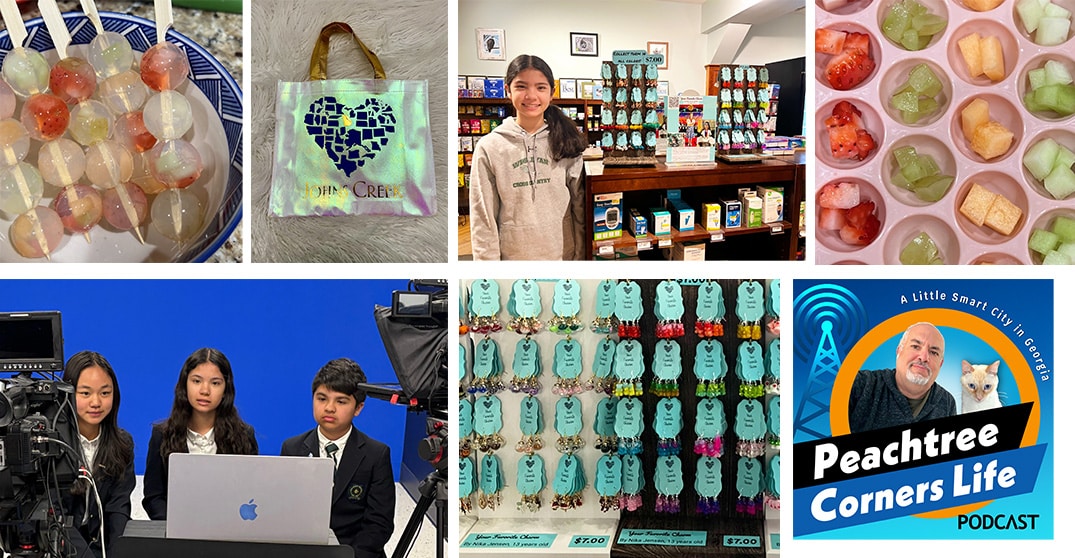
In this episode of Peachtree Corners Life, host Rico Figliolini spotlights three remarkable student artists featured in this year’s Wesleyan Artist Market. Eighth graders Kimberly Wang and Nika Jensen, along with sixth grader Carter Jensen, share their creative journeys—ranging from edible art like fruit jellies and peppermint bark to handmade jewelry and custom-designed bags.
Kimberly talks about her love for food art and balancing sweetness with fruity freshness, while Nika and Carter discuss building a jewelry business that also gives back—donating proceeds to families in the Philippines. This isn’t just an artist market; it’s a showcase of purpose-driven, globally inspired young talent. The event runs April 25–26 at Wesleyan School and is open to the public.
Podcast Takeaways:
- Kimberly Wang creates handmade edible treats, balancing flavor and freshness for the show.
- Nika and Carter Jensen co-run a jewelry and fashion accessory business, inspired by global travel and cultural experiences.
- Nika donates part of her proceeds to support families in the Philippines.
- All three students are deeply involved in extracurriculars—from musicals, marching band, math club, and academic bowl.
- The Wesleyan Artist Market features 24 student artists and over 70 professionals—open to the public April 25–26.









Timestamp:
00:02:19 – Student intros and extracurriculars
00:03:06 – First-time participants and motivations for joining
00:04:13 – Kimberly’s edible art and recipe testing process
00:05:16 – Nika and Carter’s jewelry and bag design business
00:07:06 – The reward of watching people enjoy your creations
00:08:20 – Donating art profits to support families in the Philippines
00:10:39 – Future aspirations in medicine and law, with art as a passion
00:12:06 – Behind-the-scenes logistics of preparing for the market
00:13:25 – Global travel inspiration: 73 countries and counting
00:17:19 – Where the students draw artistic inspiration
00:20:04 – Custom requests: From peppermint bark to Lego earrings
00:21:16 – Anticipation and excitement for this year’s market
00:22:29 – Reflections on Wesleyan and the artist experience
Transcript:
00:00:01 – Rico Figliolini
Hey, everyone. This is Rico Figliolini, host of Peachtree Corners Life. We have a great set of guests today. Because of the upcoming Wesleyan Artist Market, we thought we’d do some interviews with student artists. Three of the 24 that are going to be at Wesleyan Artist Market. So they’re with me here today. So we’re going to get right into that shortly. I just want to say thank you to our corporate sponsors. So I want to say thank you to EV Remodeling, Inc., based here in Peachtree Corners. The owner is Eli. Him and his family live here. They’re great. They do a lot of design work, design your space. Essentially, any home remodeling you need from whether it’s your kitchen, your bathroom, or a whole house remodel, or even an addition to your home, think about it, whatever you need, Eli can handle. So check them out. Go to evremodelinginc.com and find out how they can design your space and your life. Our next sponsor just came on, and they’re Vox Pop Uli. I want to thank them for joining us as well. They deal with all sorts of things you can imagine putting your logo on, similar to a little bit about what these kids do, right? They’re creating artwork. They’re creating a brand for themselves. And so this is what Vox Pop Uli does, right? They’ll take your brand and bring it to life. Essentially, anything that you can think of that would go on apparel, whether it’s sweaters or T-shirts or wherever you want to put your brand engraving, your logo, what object you want to put it on, even vehicle wraps. So if you’ve got a truck, you want to put a whole wrap around it, check them out because they can do that. They’re here in Peachtree Corners and they’re called Vox Pop Uli. So visit their website. I’ll have the links in the show notes as well. So thank you guys. I appreciate your support. So now let’s get right into it. Let me introduce our three artists, great Wesleyan students. Can’t wait to start talking to them. We have Kimberly Wang first on your left, on my left, and Nika and her brother Carter Jensen, who work together creating the artwork they do. So I’m going to ask you guys just to, you know, give me a little background. Tell me who you are, your grade, what you do, extracurricular, stuff like that. This way our audience can get to know a little bit more about you. So let’s start with Kimberly Wang. Hey, Kimberly.
00:02:19 – Kimberly Wang
My name is Kimberly Wang. I’m in eighth grade this year, and outside of Artist Market, I do marching band, and I also do the musical production this year, which is Matilda.
00:02:31 – Rico Figliolini
Excellent. What about Nika? How about you?
00:02:34 – Nika Jensen
I’m also in eighth grade. My name is Nika Jensen, and apart from doing the Artist Market, I do cross country. I’m also in Matilda this year, and I also do math counts, which is a math club.
00:02:47 – Rico Figliolini
Okay, cool. And Carter?
00:02:49 – Carter Jensen
Hello, my name is Carter Jensen. I’m in the sixth grade. And outside of the artist market, I do academic pool and I also do basketball.
00:03:00 – Rico Figliolini
Excellent. Alright, cool. So have you guys ever done the artist market before? Is this the first time?
00:03:06 – Kimberly Wang
This is my second year doing it this year.
00:03:08 – Rico Figliolini
Second?
00:03:10 – Nika Jensen
Yeah, this is our first year because we’re new students this year.
00:03:13 – Rico Figliolini
Alright, cool. What inspired you to get into it, Nika?
00:03:17 – Kimberly Wang
Well, I had my own business before we came to Wesleyan and so I thought that the artist market is a good way to like show my business to other people in our community. So yeah.
00:03:30 – Rico Figliolini
And you brought in your brother Carter to help you with?
00:03:35 – Nika Jensen
Yes, sir. He’s also part of the business.
00:03:39 – Rico Figliolini
Alright cool. Okay so, Kimberly. Food. Food is art, right? I’m sure your mom would probably say, it’s food, just eat it. But you’re playing with your food, essentially. What they used to tell you not to do, right? So when you create your food art, what do you think about? How do you go through this? How do you choose what you do and what do you exactly do?
00:04:13 – Kimberly Wang
So this year, I am making fruit jellies and peppermint bark. And when I think about what creations I want to make for the artist market, I go online and I look through like, what are some popular desserts that a lot of people like? And once I like choose my items, then I go through
the recipe and then I do a lot of trial and errors to make sure that like the products are like healthy and they taste well.
00:04:42 – Rico Figliolini
So they have to be edible, right? Because this is edible art?
00:04:45 – Kimberly Wang
Definitely, yes.
00:04:46 – Rico Figliolini
So are you eating a lot of the edible art before you get to what you need?
00:04:50 – Kimberly Wang
Not really. I don’t usually taste a lot of the food. I let my family taste it.
00:04:56 – Rico Figliolini
Ah, good. I like that. Yes. Get them to participate. Cool. So edible art, that’s one way of doing it. Jewelry, that’s something else, right? Wearable. How do you guys, Nika, Carter, how do you get to the place of what you do?
00:05:16 – Nika Jensen
So I started my business when I was 11 years old and it started like I got my first jewelry making kit and I kind of just expanded from there. So like I usually use Amazon to search and find like the prettiest designs like of earrings and pendants and get opinions from other people like my mom and my family to see like if they think it’s like wearable and if they like it. So I browse on Amazon for a while and I find like the best and high quality products and then I hand make them at home usually like every day after I come home from school so and my brother he does something else and he can tell you about that.
00:06:01 – Carter Jensen
I, my sister, she got a Cricut machine for, like, her 12th birthday, I think. And started making these, like, iron-on bags with the Cricut machine and, like, making them based on, like, Georgia and, like, Wesleyan and designing it based on fashion.
00:06:19 – Rico Figliolini
Alright. Cool. So let’s get back to Kimberly. The food that you do. Do you have particular flavors you like? Do you have particular areas that you stay in?
00:06:33 – Kimberly Wang
So this year I’m trying out like something more sweet with chocolate. But last year I definitely went for more of like the fruity side. And I think I like to keep it like a balance. So that way one is not overpowering the other. My personal favorite will probably be fruit because it’s healthy. And I mean, it just tastes good in general.
00:06:56 – Rico Figliolini
Okay. Alright cool. What’s the most rewarding part that you can think of, of making edible art?
00:07:06 – Kimberly Wang
Well, I mean definitely like you said before you get to eat a lot of food. I mean, I did say before that I don’t eat a lot of the creations I make, but sometimes I still do eat it. And so I think it’s also really rewarding to see like people try out your creations and see like their reactions to what they think of it.
00:07:27 – Rico Figliolini
So when, I know I’ve spoken to other artists when they sell their artwork like paintings or stuff like that they get a chance to see it sometimes when the fan that bought it if you will, would send them a picture of where they hung it right? Yours disappears right?
00:07:45 – Kimberly Wang
Yeah, exactly.
00:07:47 – Rico Figliolini
Yeah I guess, there’s no way to, short of doing a selfie with it or taking pictures of it, there’s no there’s no permanency to it so how does that feel?
00:07:57 – Kimberly Wang
I mean well as long as the people enjoy it that’s good. And I mean I think mainly it’s about like the memory that you have of having the food and if you like it then it stays as a good memory for you and if you don’t then I mean you can always try out different things.
00:08:20 – Rico Figliolini
Okay. Nika, Carter, as far as the jewelry goes the, you’ve used it to raise money to support children in the philippines? yes
00:08:29 – Nika Jensen
Yes sir.
00:08:31 – Rico Figliolini
Is that, is that how you started this when you were 11? Is that the reason?
00:08:35 – Kimberly Wang
No, so I was like 11 during the pandemic. So I was always looking for a way to express my creativity. And so that’s how I started my own business. And so I was selling at my uncle’s pharmacy and I was saving up the money to use for like college or for like other events later on in my life. But this last year and a half before this school year, we were living in the Philippines. And so I was really touched by all of the families there. And we even did something similar where we gave out food and canned goods over Christmas to poor families there. So that just
really touched me. And so ever since we got back to America, I’ve been donating part of my profits to other families in the Philippines.
00:09:24 – Rico Figliolini
Carter, did you end up going on that trip as well?
00:09:28 – Carter Jensen
Yeah, I was with her. We stayed there for about a year and a half. We also did schooling there.
00:09:36 – Rico Figliolini
It’s interesting brothers and sisters, I have three kids and you know growing up brothers and sisters always there could be dynamics there. So how do you get along? Do you ever say to your sister, I don’t know about that. You know that might not look as good, that might not sell. Do you give good feedback? I mean how do you praise her or how do you work together?
00:09:58 – Carter Jensen
She’s more of the leader of the business so like I usually just like try to like agree with her and like yeah.
00:10:12 – Rico Figliolini
Alright that’s cool well you need a leader of the pack sometimes right? So Nika the artwork that you do, you know this is part of what you do you’ve mentioned other things you do right? I know you’re young, you all are, you know you’re not old enough to really think well maybe you are to really think what you want to do with your life right? Is art something that you want to keep as part of what you’re doing in your life?
00:10:39 – Nika Jensen
It’s definitely something that’s of great value to me, but I kind of want to pursue the medical field, but art is also really important to me.
00:10:49 – Rico Figliolini
Okay. Sounds good. Same question to Kimberly. What about you? How do you feel about the work you do?
00:10:57 – Kimberly Wang
I definitely enjoy making food, but like Nika said, I was also really interested in the medical field. And so like I’m not really sure if I’m going to continue pursuing this. But I mean it’s definitely brought me a lot of joy while doing food art.
00:11:15 – Rico Figliolini
Okay. Medical field both of you, that’s cool. What about Carter? How about you? 00:11:19 – Carter Jensen
I kind of like, I like doing art it’s one way to like express your creativity as my sister said. But I also kind of, I’m not really sure what I want to do when I grow up, maybe be a lawyer.
00:11:33 – Rico Figliolini
Okay. Well, artwork gives you a chance, right, to play a little bit, to be able to also see how people, like Kimberly, like you said about how when people see your food or taste your food and your food art, if you will, and it gives you a chance to see how people appreciate what you’re doing, I think, right? The challenges of making food art and keeping it fresh and making sure you’re going to deliver it on the right way I guess at the Wesleyan artist market, how do you how do you handle that part of it?
00:12:06 – Kimberly Wang
So for me the night before each day of the selling I would stay up really late and I make all my products so they’re all fresh and they’re all new. Because I want the best for the people that are eating the food because I don’t want anything to go bad overnight and so I make sure that it’s always new products and I make it, yeah.
00:12:32 – Rico Figliolini
We don’t have the same issue with the jewelry that you do, Nika. So that could last forever, right? But putting it together, sourcing the supplies, right, of what you do, the logistics of it, I guess. How do you handle that? Like getting all the materials together? Do you order it all on Amazon?
00:12:52 – Nika Jensen
Yeah, I order like 99% of all of my things from Amazon. And then since I already have the materials shipped to me, then all I have to do is just create them from my house. So it’s easier for me than having to go out and buy supplies at stores.
00:13:11 – Rico Figliolini
Sounds good. What inspires you as far as jewelry goes? I know that you said you look online to see other things and what the trend is. So where do you find most of your trends? Is it just on Amazon or is it social media, other places?
00:13:25 – Nika Jensen
I kind of observe other people and like what they wear and also social media. And I get a lot of inspiration also from like nature and from like my travels. We’ve been to a lot of countries in the past five years, 173 countries.
00:13:44 – Rico Figliolini
How many?
00:13:45 – Nika Jensen
I’m sorry, not 173, 73 countries.
00:13:49 – Rico Figliolini
73 countries?
00:13:50 – Nika Jensen
Yes, sir.
00:13:51 – Rico Figliolini
That you’ve been to in how many years? I can’t even wrap my head around that. How did you even do that? Teleport? I mean, how did you do that? Wow. What is your heritage, if you don’t mind me asking?
00:14:12 – Nika Jensen
I’m half Filipino. My brother and I are half Filipino. And then my father is part Danish and then also American.
00:14:21 – Rico Figliolini
Do you speak any languages?
00:14:23 – Nika Jensen
I speak the language of the Philippines called Tagalog and then English. And I’m learning Spanish.
00:14:30 – Rico Figliolini
Really? Okay. Kimberly, how about you?
00:14:33 – Kimberly Wang
So my mom is Taiwanese and my dad is Chinese. So I speak Chinese, English. I’m learning French and I’m learning Korean.
00:14:43 – Rico Figliolini
Really? Wow. Okay. Speak Mandarin, is it? Okay. My son was learning that for a year and he was, it’s a tough language to learn. But I’m sure being able to travel for example Nika, to be able to see other other countries and inspiration from those countries. What of the 73, 75 countries you visited what would you say the top five would be for that type of inspiration? Can you pick that up?
00:15:16 – Nika Jensen
I think so. I really like Argentina just because it’s so unique and the culture is just so strong there. Like you really feel so immersed just when you like step into the country. I like Italy, not only because of the food, but that’s also where I got a lot of inspiration for my jewelry. Just like the glass in Venice, like the Murano glass, like that’s also a really big inspiration. In Turkey, that’s when I first like found my interest in jewelry because there was, we went to this bead store and there was like thousands of different beads and I got to like choose different charms and like experiment with creating jewelry. So Turkey, Argentina, Italy, and then I have to give it to the
Philippines, obviously, because we lived there for so long. And then that’s hard. What do you think, Carter?
00:16:12 – Carter Jensen
I like India because I really like butter chicken. Also like Italy because I like pizza and pasta.
00:16:27 – Rico Figliolini
Yes, can’t get any better pizza than Italy, that’s for sure.
00:16:30 – Carter Jensen
Yeah, it’s really good there. And I also like Japan because it’s very futuristic and it’s like…
00:16:38 – Rico Figliolini
Is it?
00:16:39 – Carter Jensen
Yeah, it’s like a new environment and it’s like…
00:16:45 – Rico Figliolini
Yeah, cool. I can’t wait I think where, I think we may be heading there in July so that would be fun. I’ve never been so that would be interesting. Cool so with the artwork, with the inspiration, with the journey that you guys have been on, do you think that, are there any artists it’s hard and food maybe unless it’s Gordon Ramsay or something, but do you draw any inspiration? Who do you draw inspiration from for the work for what you do? Let’s start with Kimberly.
00:17:19 – Kimberly Wang
I don’t really have a specific artist that I look up to but I do watch some cooking shows and some like dessert making shows and they always really inspire me so I feel like that’s what really led me into like starting food art. And so I was like, whoa, this is really cool. And so I was like, okay, let me try this. And so now I’m here and then I’m like, this is pretty fun.
00:17:49 – Rico Figliolini
Oh, okay. Carter, I know you’re not the main person doing the artwork, but what do you see when you’re working with your sister? How does that feel working with her, doing the stuff with her, the artwork? Whatever you’re doing with her, how you know what’s that journey feel like for a brother and his sister?
00:18:13 – Carter Jensen
It’s kind of relaxing doing artwork and like peeling off like the stickers on the bags
00:18:26 – Rico Figliolini
Okay, alright, that’s cool. Sister, how do you feel?
00:18:30 – Nika Jensen
Yeah I just enjoy anytime I’m like I get to make jewelry because I feel like it’s such like an important thing to me. And it also like my brother said it’s really relaxing and just like sitting in our home and just like making jewelry it’s like, it’s really fun for me.
00:18:48 – Rico Figliolini
Do you wear? I’m assuming you wear some of the stuff you make?
00:18:51 – Nika Jensen
No actually I don’t have my ears pierced. And so I just like making it and seeing my creations on other people.
00:19:00 – Rico Figliolini
Okay, cool. Kimberly, do you ever decide, I’ve got to make something, I want to eat something, do you ever decide to do that, or is it always just for the art?
00:19:10 – Kimberly Wang
I think mainly just for the art. Because, I mean, I do piano outside of school, and so most of my time is sucked into that. But, I mean, sometimes if I do want to make something, yeah, I’ll go for it. And I’ll try my best, but it might not be successful.
00:19:31 – Rico Figliolini
Have you ever been, have you ever designed anything custom design? Because someone requested it from you? Like has anyone ever asked Kimberly, has any anyone ever asked yeah can you make that for me? Like aside from the artwork you sell.
00:19:50 – Kimberly Wang
I don’t think so. I did get one request by a high schooler to make peppermint bark for him for his art and science class. But like other than that, no.
00:20:00 – Rico Figliolini
Okay. How about Nika? Have you ever had a request for jewelry?
00:20:04 – Nika Jensen
Yes, I have. So my mom was posting some of my creations on social media and someone reached out to me and she wanted lego earrings like so little like lego figurines as earrings. So I used some of my own legos and then we also bought some but I drilled a hole on top of their head and I had to stick a screw inside. I had to mail it to them. And then they sent me a picture of them wearing it.
00:20:42 – Rico Figliolini
It’s just the way you were describing it, drilling the hole in the head. It’s like, all right, well, that’s good. So there’s the art. You do anything for art, I guess. That’s good. Great. We’ve been showcasing and talking a lot about art here and food and stuff. What are you looking forward to this year’s Wesleyan Artist Market? What is it that’s looking forward? I mean, you have there’s
three of you out of 24 other students. Have you seen or talked to other students and what they’re doing for the show, for the market? What are you looking forward to?
00:21:16 – Nika Jensen
To me?
00:21:17 – Rico Figliolini
Yeah, sure. Let’s go with it.
00:21:18 – Nika Jensen
Okay. Yes. Kimberly and I are actually really good friends so we’ve been like talking with our other friends that are doing the artist market and we’re like you know what they’re selling and yeah. I’m just really excited because we’ve never my brother and I have never done something like this before so I think it’ll be a really good opportunity and it’ll be fun so.
00:21:39 – Rico Figliolini
Something wholly new. That’s good, a good experience. How about you Kimberly?
00:21:45 – Kimberly Wang
Ever since last year, I was really astonished by everything I saw, even if it was like the adult artists, but like the student artists, they were all so talented. I know like a few other people are making food art and people like Nika are making jewelry. And so I’m honestly really inspired and just really blown away by all the effort that everyone puts in.
00:22:13 – Rico Figliolini
Cool. Anything that I’ve not touched on, guys, that you want to share about, individually about what it takes to do what you’re doing or your experience at Wesleyan? Why don’t we start with Kimberly?
00:22:29 – Kimberly Wang
I don’t really have much. I feel like this was a really nice opportunity to be able to share what Wesleyan Artist Market is about and how students have been able to participate in it.
00:22:42 – Rico Figliolini
Cool. Nika?
00:22:43 – Nika Jensen
Yeah so my mom printed out pictures of our time in the philippines so this first one it’s all the bags of food that my old school donated to families in the philippines.
00:23:01 – Rico Figliolini
Excellent. Glad you printed those out.
00:23:03 – Nika Jensen
This is my old class. This was this year when I sent my profits back to the Philippines. And those are all the boxes of food and clothes that they get with that money.
00:23:16 – Rico Figliolini
Wow, you really did make a lot of money.
00:23:18 – Nika Jensen
Yes, sir.
00:23:19 – Rico Figliolini
That’s good. That’s great. And maybe at some point I’ll ask Camille on this, getting some pictures from you all of some of the artwork that you’ve done. I’d love to include that when we post the podcast as well. And if you have any social media where you post your artwork on, if it’s public, feel free. We’re going to be sharing this and we’ll be taking you all as well. I think we got everything covered. I mean, you’re all just unbelievable kids. You’re just doing great work. And I’m just like, it’s always great to talk to you, to Wesleyan students, just like, or to students that are motivated, put it that way, to do things. So glad to see that you’re doing all sorts of things and I still can’t wrap my head around 75 countries, I’m just still trying to think that just like in five years, I can’t even see doing that. But I want to thank you all for for joining me so this is Wesleyan Artist Market you all will be at and that’s April Friday the 25th from 10:00 – 7:00 pm and Saturday April 26 from 10:00 to 3:00 pm. We’ve been talking with Kimberly Wang, who does food art, edible food art, and Nika and her brother Carter Jensen, who do jewelry. Appreciate you guys being with me and being so talkative and just being good guests. So thank you all. Hang in there with me for a second. Everyone else, I want to say thank you again for joining us. You can find out more about Wesleyan Artist Market from just going to wesleyanschool.org or just Googling Wesleyan Artist Market it’ll pop up for you. And it’s open to the public, Friday and Saturday in April. So check them out. Visit the 24 students that are displaying their artwork as well, along with the over, I think it’s over 70 professional artists there. And thank you all from, I guess you’re in Wesleyan Wolf TV station too. So appreciate you doing that with me. So thank you everyone. Stay well.
Related
Arts & Literature
Perimeter Ballet Celebrates 30 Years of Dance and Inspiration
Published
2 months agoon
March 14, 2025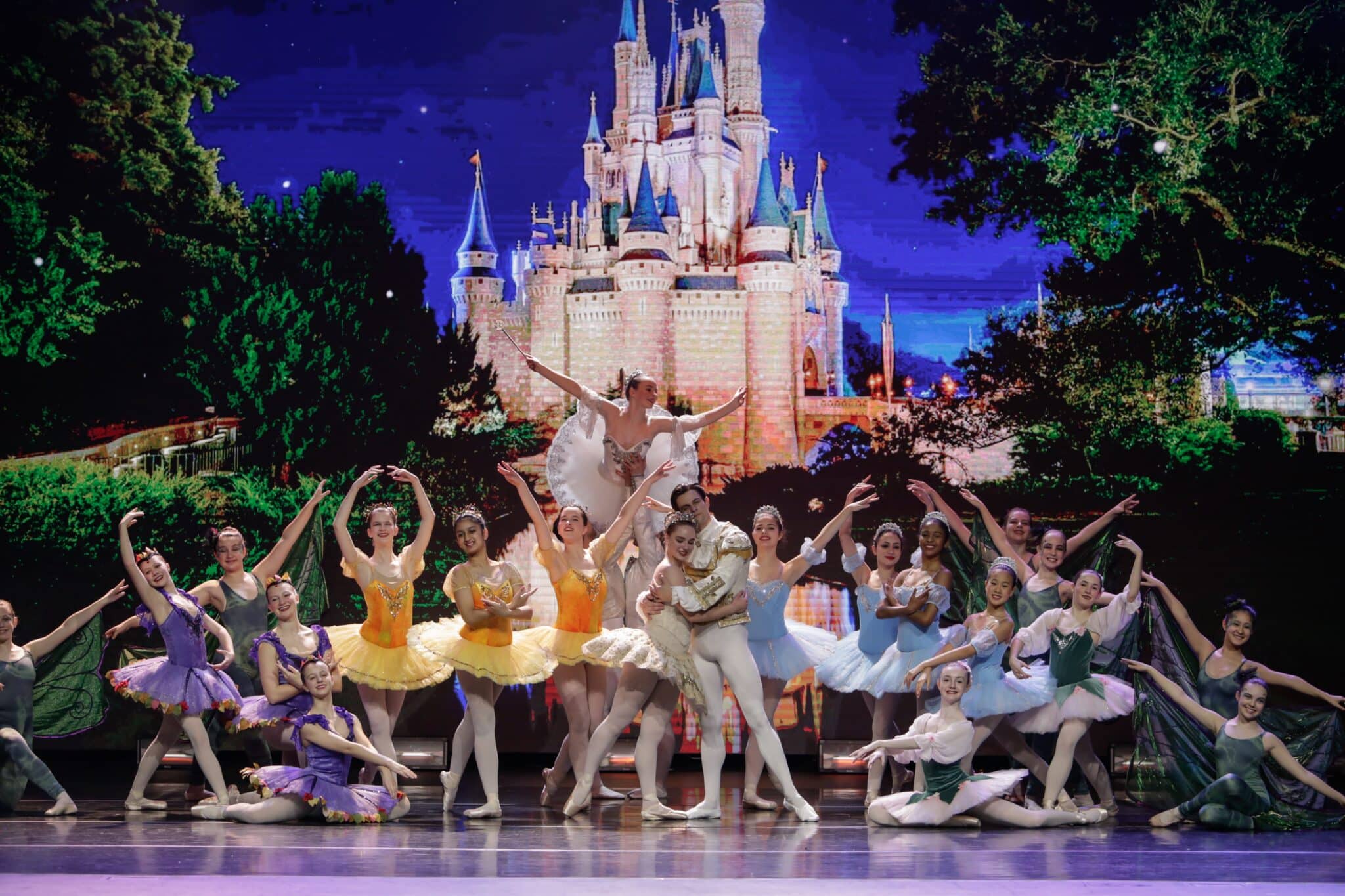
Perimeter Ballet celebrates its 30th anniversary this year. Founded in September 1995, the faith-based ballet school in Johns Creek has long been an integral part of the local arts scene and the community.
What began as a bare-bones program held in the sanctuary of Perimeter Church — on carpeted concrete floors, using the backs of chairs for barres — has grown into a respected school of more than 200 students. Ranging in age from five to 18, the young dancers at Perimeter Ballet are not only committed to the study of dance but also to using their gifts to share their faith.
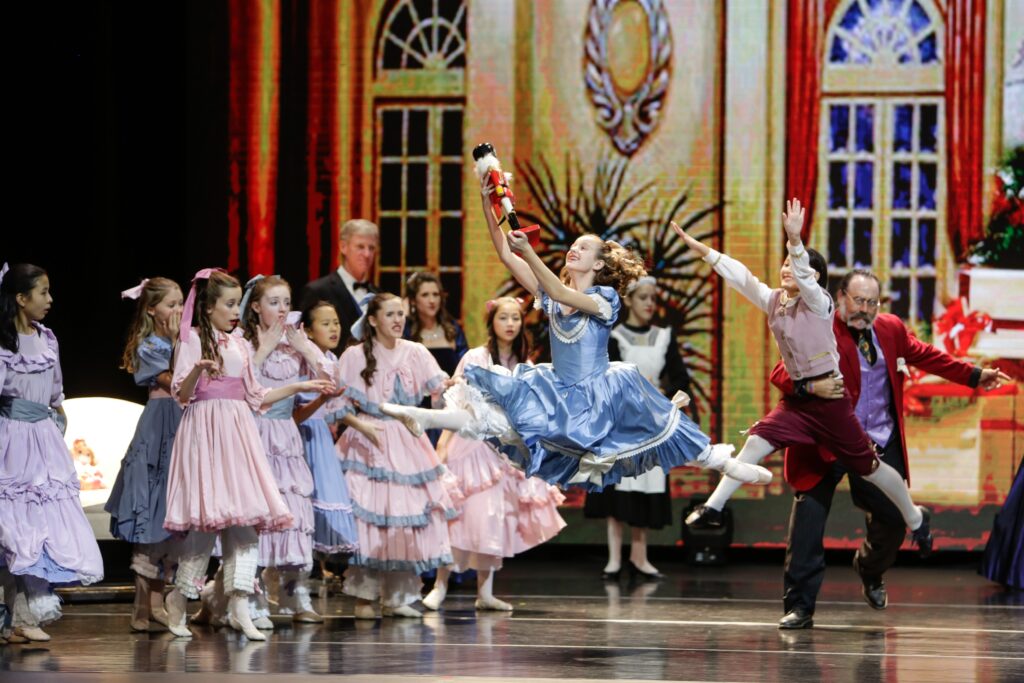
According to the program’s website, their purpose is to “emphasize character along with technique … to counter the natural tendency towards self-absorption in the ballet studio.”
They are “very committed to teaching children to dance — to develop discipline, technique and musicality. [But] the Christian instructors [also] train the students in a context that understands that there’s a reason to dance.”
30 years of dance and faith
Current director, Becky Brown, has led the school for several years, growing the program while faithfully following Perimeter Ballet’s original mission. She oversees weekly classes, summer dance camps and annual productions, including an acclaimed Spring Recital and a presentation of The Nutcracker each December.
For the 30th anniversary, Brown is excited to continue the creative work of the ballet school and share their artistry and message with a larger audience.
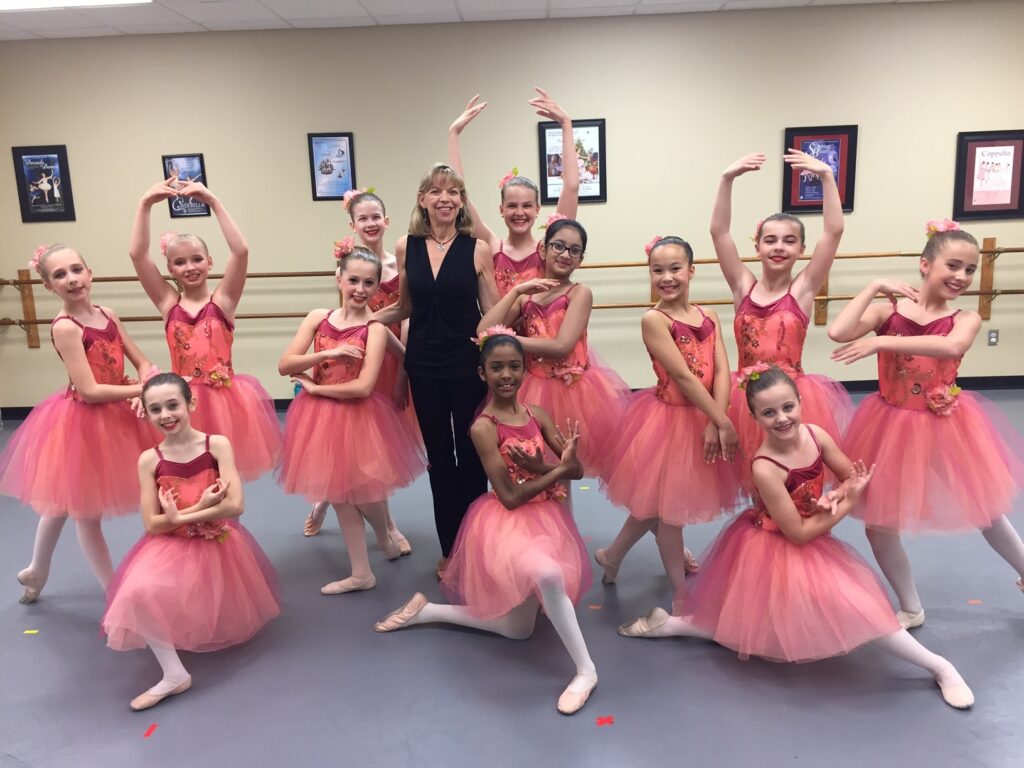
“This year will certainly be a special time for us as we celebrate and look back on 30 wonderful years of Perimeter Ballet and 20 years for our performing company, For His Glory,” she said. “We will be performing the Nutcracker December 11–13 and will have some beautiful new costumes to commemorate the occasion. We look forward to seeing many of our alumni and their families at the performance.”
Classes and instructors
Open to the community at large, weekly classes at Perimeter Ballet range from Creative Movement, PreBallet and grade-level classes for preschoolers through third grade to more advanced classes (two or more times per week) for older students.
Summer camp sessions as well as intermediate level and advanced level intensives are also offered. For the upper-level intensives, students work on their ballet technique but also branch out into jazz and other forms of dance.

The school’s nine teachers are skilled not just as instructors but as performers themselves, having years of experience dancing with companies such as Ballet Southeast, Atlanta Ballet, North Atlanta Dance Academy and the Metropolitan Opera Ballet. They bring that experience and their Christian faith to all of their classes and interactions with the young students.
For His Glory
In addition to the work they do as a ballet school, Perimeter Ballet also has an audition-selected performance company — For His Glory.
With three levels, made up of dedicated students striving to advance their skills and reach their “God-given potential while giving glory to [their] Lord and Savior, Jesus Christ,” the program presents several high-quality productions throughout the year.
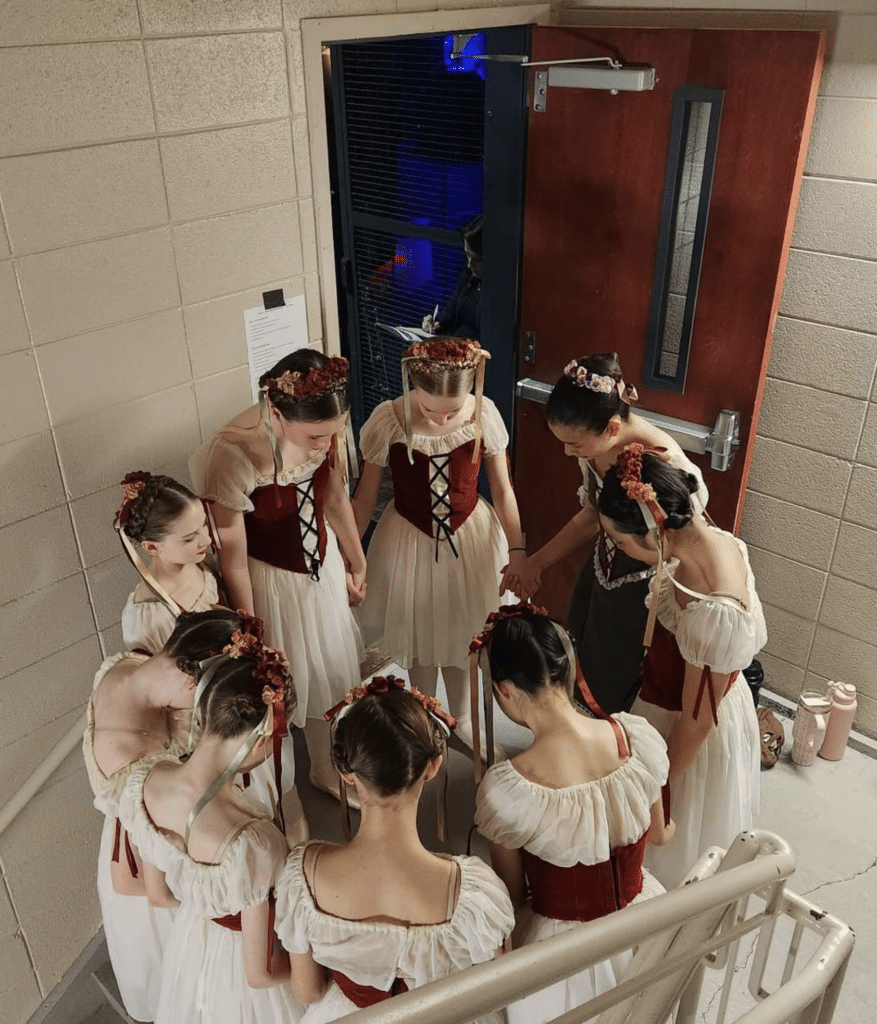
As Perimeter Ballet shares on their website: “Dancers are trained in the ballet classics as well as contemporary forms of dance, which are used in performances, worship settings and outreach. Classical ballets … in the group’s repertoire include Cinderella, Sleeping Beauty, Coppélia, excerpts from Four Seasons and La Fille Mal Gardee. In addition to Christmas and other outreach programs, For His Glory has danced internationally in London, India and Belarus.”
The group most recently performed Beauty & the Beast for two successful shows on stage at the Perimeter Church Sanctuary in early February of this year.
Impact and inspiration
All of this — the focus on faith and commitment to dance, the classes, intensives and stunning productions — have been a decades-long inspiration to the community and especially the student dancers who take part.
Many of the students stay with Perimeter Ballet for much of their childhood, learning and growing in dance as well as in their faith from elementary age through high school. That kind of involvement can clearly impact every aspect of their lives, from discipline learned to how they choose to interact with and be in the world.
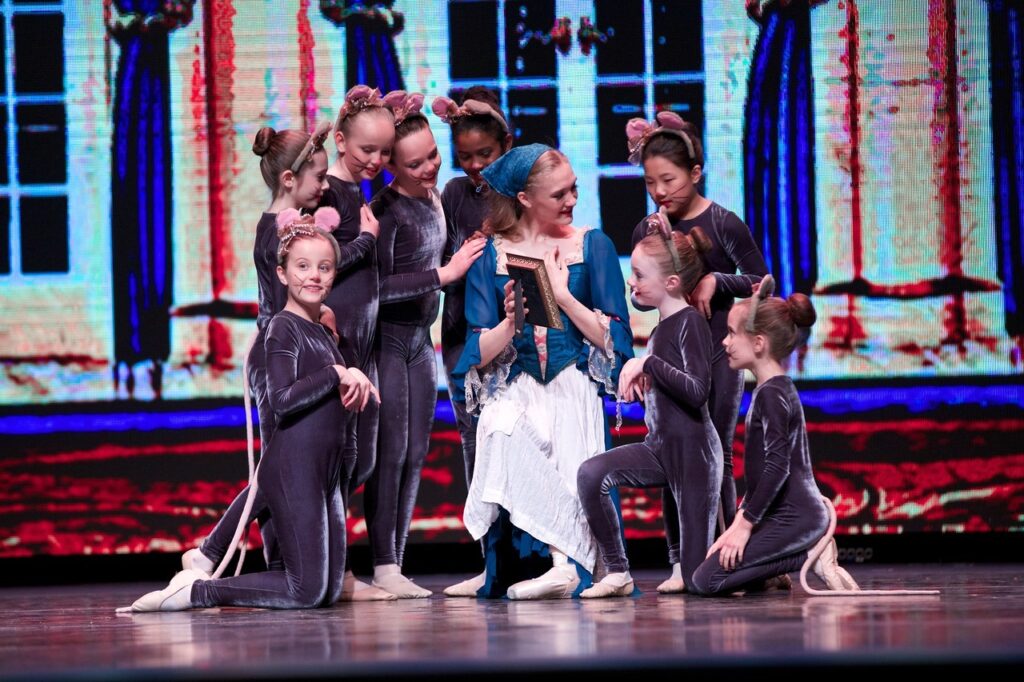
One student, Anne Bradley Maxwell has been taking ballet with the Perimeter program since she was three years old. Now a high school junior in Peachtree Corners, she’s reflected on her time at the school and in the performance company as well as Perimeter Ballet’s milestone anniversary.
“For fifteen years … I matured within this unique, local community arts program,” she shared. “This year marks the 30th anniversary of its founding … and I’m honored to say I’ve been a student for half of that era. The talented instructors in [the] program not only helped advance me into an accomplished ballerina but also into a more faithful servant of Jesus Christ using dance as a form of worship.”
A lifelong journey
“This lifelong journey included annual seasonal training, auditions, numerous external summer intensives and wonderful performances on stages across the nation and abroad, for audiences ranging from a few dozen to several thousand,” Maxwell continued.
“… Taking ballet has instilled in me a deep understanding of perseverance and resilience. Pursuing excellence in ballet required me to overcome physical and emotional challenges … I learned to seek out solutions — whether physical therapy for healing my body or prayer and reflection to rejuvenate my spirit. These experiences have strengthened my ability to face setbacks, adapt and emerge stronger.
Ballet has cultivated in me a unique combination of athleticism, discipline and creative imagination. The most elegant performances emerge from the interplay of technical mastery and creative expression. The collaborative nature of ballet, where individuals work in harmony to create something greater than themselves, informs my approach to teamwork and innovation, both in the classroom and community.”
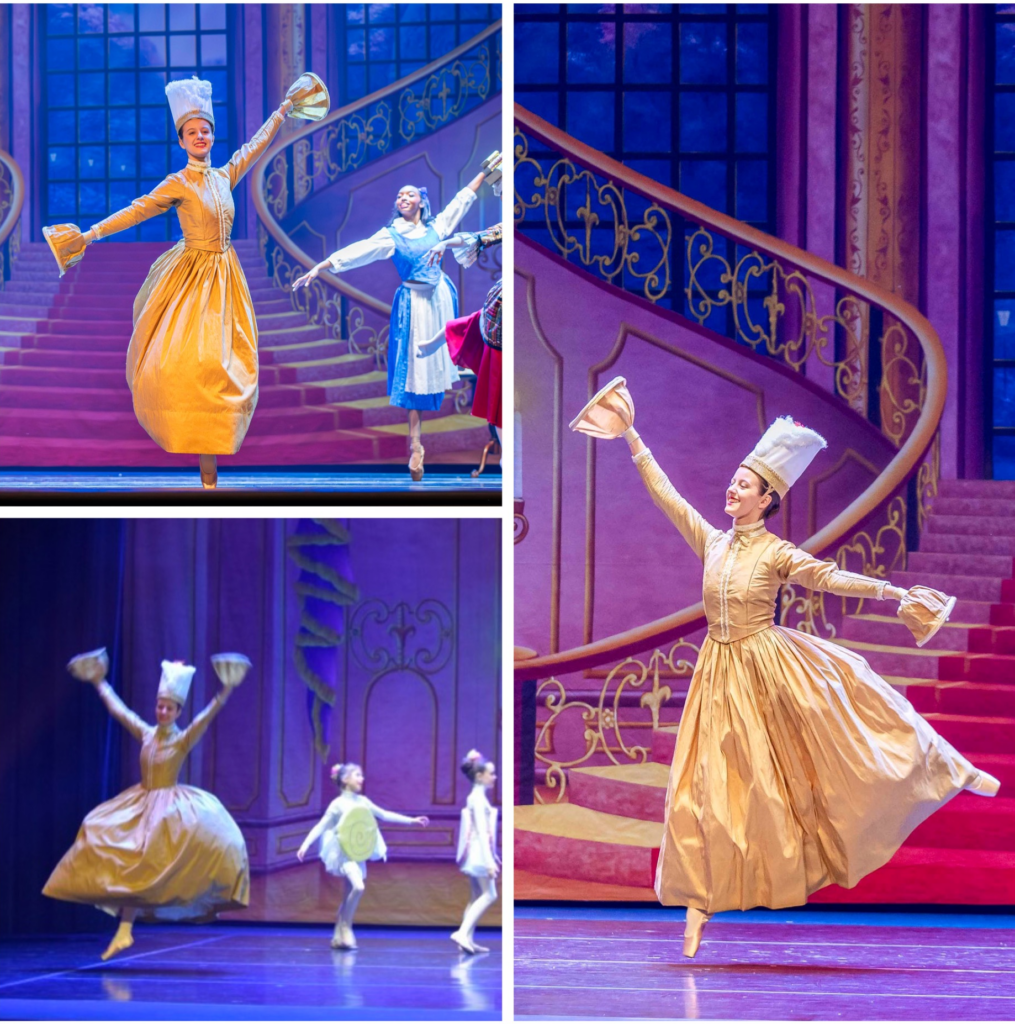
“… Ballet has [also] given me the gift of joy — both in experiencing it personally as a testament to Christ’s goodness and in sharing it with audiences. This joy, while intangible, is a powerful force that I hope to bring into my next chapters following high school. Whether through teaching movement, choreographing performances or exploring ways to expand ballet offerings, I aspire to enrich the community with the beauty and joy of dance.
… My time at Perimeter Ballet has equipped me with perseverance, discipline, creativity and a passion for sharing joy — qualities that I am excited to further cultivate as a young adult. These will not only enhance my personal journey but also contribute meaningfully to the rich tapestry of life. As I enter my senior year later this fall, I am full of gratitude for the solid foundation of technique and creative expression honoring God as the giver of my talent.”
Upcoming events
Perimeter Ballet’s Annual Spring Recital will be held in the Perimeter Church Sanctuary on Thursday, May 1 and Friday, May 2 from 7 p.m. to 8:15 p.m.
Summer camp sessions are scheduled for June and July. Registration will open on April 15.
2025-2026 classes will start in August with registration opening on April 15.
With help from Anne Bradley, the school is also planning a fundraiser event later in the year to mark the 30th anniversary.
For more information, visit perimeterballet.com.
Related
Read the Digital Edition
Subscribe
Keep Up With Peachtree Corners News
Join our mailing list to receive the latest news and updates from our team.
You have Successfully Subscribed!

Peachtree Corners Hosts Discussion About the Future of Local Policing

D1 Training Brings New Fitness Concept to Peachtree Corners

MomoCon 2025 to bring 60,000 Fans to Atlanta for a Weekend of Cosplay, Animation, Gaming and Music

Atlanta’s Dog Howl-O-Ween Festival Moving to Peachtree Corners for 2025

City of Peachtree Corners Awarded Certificate of Achievement From GFOA for Seventh Straight Year

Local Special Olympics Pickleball Team Honored with State House Resolution

From Boardrooms to the Himalayas: Vandana’s Journey to Purpose and Growing with Intention [Podcast]

Brandon Branham Honored for Transformative Leadership in Peachtree Corners

Music Matters Productions Expands Peachtree Corners Headquarters

Brandon Branham Honored for Transformative Leadership in Peachtree Corners

From Boardrooms to the Himalayas: Vandana’s Journey to Purpose and Growing with Intention [Podcast]

MomoCon 2025 to bring 60,000 Fans to Atlanta for a Weekend of Cosplay, Animation, Gaming and Music

Local Special Olympics Pickleball Team Honored with State House Resolution

Atlanta’s Dog Howl-O-Ween Festival Moving to Peachtree Corners for 2025

D1 Training Brings New Fitness Concept to Peachtree Corners

Peachtree Corners Hosts Discussion About the Future of Local Policing

Light up the Corners [Video]

Capitalist Sage: Business Leadership in Your Community [Podcast]

Cliff Bramble: A Culinary Adventure through Italy

Top 10 Brunch Places in Gwinnett County

A Hunger for Hospitality

THE CORNERS EPISODE 3 – BLAXICAN PART 1

Top 10 Indoor Things To Do This Winter

The ED Hour: What it takes to Remove Barriers from Education

Peachtree Corners Life
Topics and Categories
Trending
-
Business3 days ago
From Boardrooms to the Himalayas: Vandana’s Journey to Purpose and Growing with Intention [Podcast]
-
City Government2 days ago
Brandon Branham Honored for Transformative Leadership in Peachtree Corners
-
Business1 day ago
Music Matters Productions Expands Peachtree Corners Headquarters





